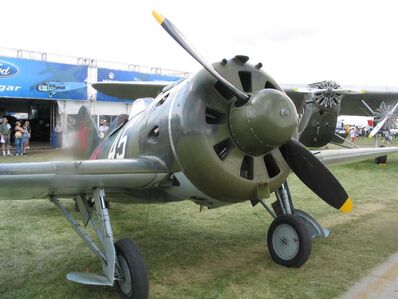The Polikarpov I-16

(Russian: Поликарпов И-16) was a Soviet fighter aircraft from the 1930s.
Description[]
The I-16 was a low wing monoplane and the first operational aircraft with retractable undercarriage.
The manoeuvrability of the I-16 was often underestimated, so that it was able to cause unexpected surprises in combat. The fighter had many nicknames: It was named “Ishak” (donkey) in the Soviet Union because of its critical take-off and landing performance, it was named “Yastrebok” (falcon) by the Soviet and Finnish Air Force, because when it flew it looked like it would hover in the air like a falcon, during the Spanish Civil War it was named “Mosca” (fly) by the republicans and by the Germans and the Spanish rebels it was called “Rata” (rat). Japanese pilots, which fought against it over China called it “Abu” (horsefly).
The fighter became famous during its missions in the Spanish Civil War and the German assault over the Soviet Union.
History[]
Development of the I-16 began in late 1932, when Nickoli N. Polikarpov's Central design bureau of the Aviatrust (TsK B) began design work on advanced low cantilever wing monoplane fighters with retractable undergarriages and enclosed cockpits.[1]
Specification[]
References[]
- ↑ Green, William. Famous Fighters of the Second World War. Purnell Book Services. 1975. Page 154